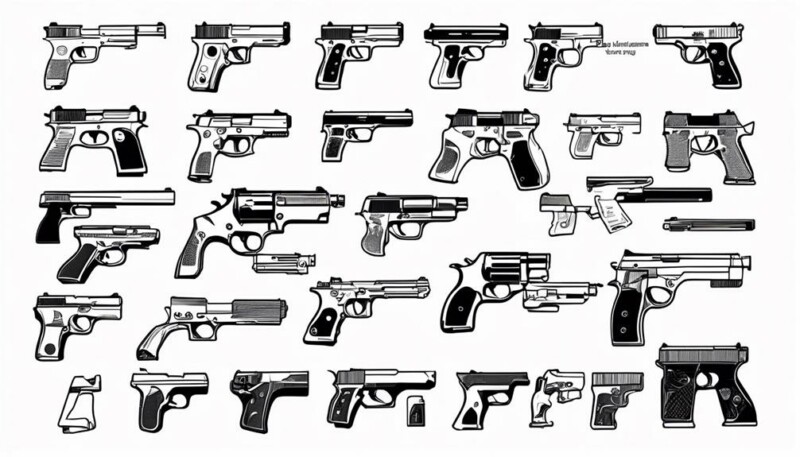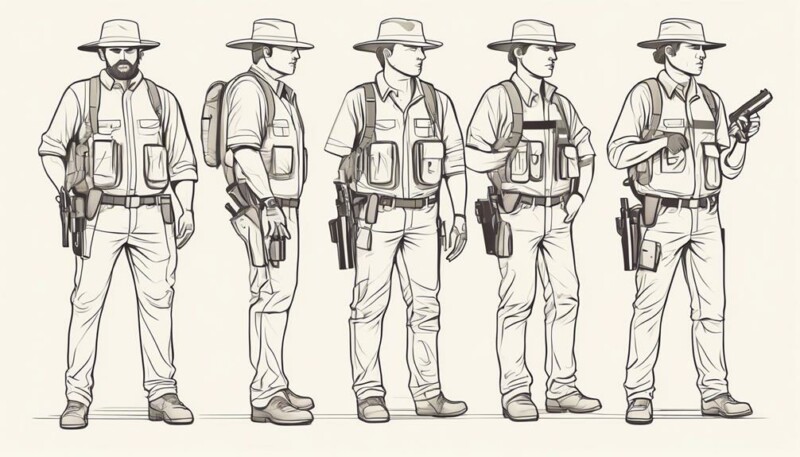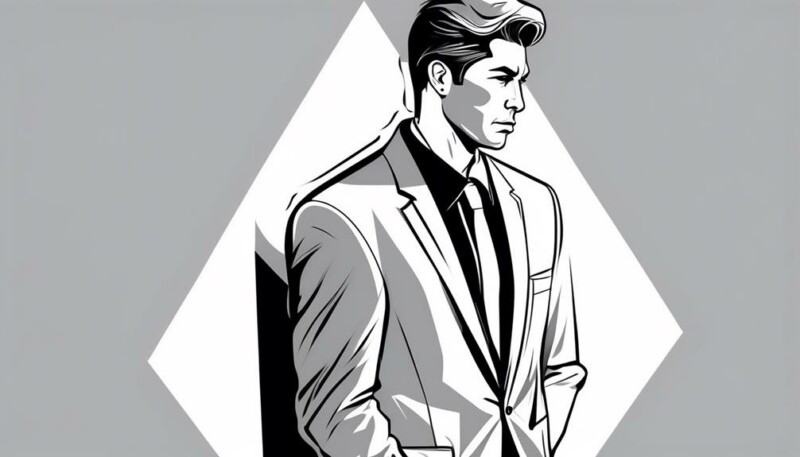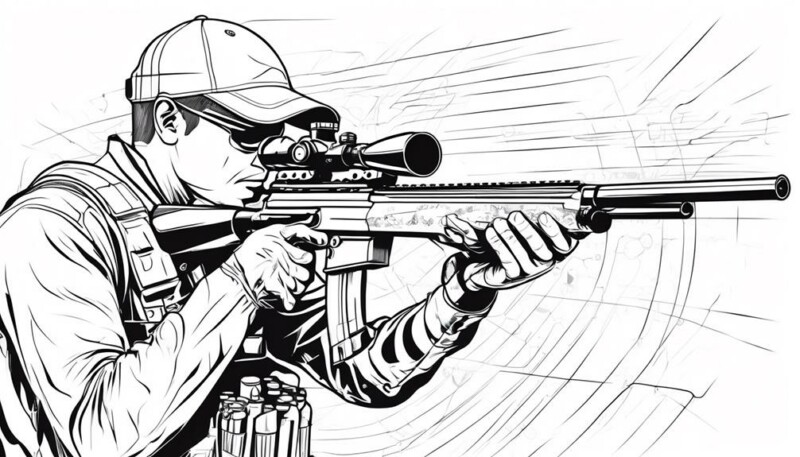Imagine this scenario: You've recently obtained your concealed carry permit and are excited to start carrying a firearm for personal protection. However, you want to ensure that you practice safe and responsible concealed carry practices. That's where these top tips come in.
Whether you're a novice or an experienced gun owner, these tips will provide you with valuable insights to help you navigate the world of concealed carry. From choosing the right handgun to understanding local gun laws, we'll cover everything you need to know to confidently and responsibly carry a concealed firearm.
So, let's dive in and explore the essential strategies for safe concealed carry practices.
Key Takeaways
- Complete a concealed carry class and obtain a certificate of completion to ensure knowledge of local laws and responsibilities, firearm safety, and proper holster selection.
- Choose a handgun that is suitable for concealment and comfortable handling, considering factors such as size, grip, ergonomics, and weight.
- Select a holster that offers a secure fit, comfort, and accessibility for quick drawing, while also considering durability and safety features.
- Stay updated on local gun laws and regulations, continuously educate yourself, and engage in regular training sessions to maintain proficiency and enhance self-defense skills.
Concealed Carry Class Requirements
To meet the requirements for obtaining a concealed carry permit, you must complete a concealed carry class and obtain a certificate of completion. These classes are designed to educate individuals on the proper and safe ways of carrying a concealed firearm.
In these classes, you'll learn about the laws regarding carrying a concealed weapon in your local area, as well as the responsibilities that come with it. The classes also cover topics such as firearm safety, proper holster selection and usage, and how to safely draw your weapon.
It's important to choose a concealed carry class that meets the specific training and educational requirements set by your state. Once you have completed the class, you'll receive a certificate of completion, which is a crucial document when applying for a concealed carry permit. This certificate serves as proof that you have undergone the necessary training and are knowledgeable about the proper handling and use of firearms.
Handgun Selection Criteria

When selecting a handgun, consider various criteria to ensure the best fit for your needs and preferences. One of the most important factors to consider is the size of the firearm. A compact or subcompact handgun is often preferred for carrying a concealed weapon as it offers better concealment and is easier to carry on your person.
Additionally, consider the grip size and ergonomics of the handgun. It should fit comfortably in your hand and allow for easy manipulation of the controls.
Another important consideration is the ease of practice drawing and handling the weapon. Look for a handgun with smooth edges and no sharp corners that could snag on clothing or holsters. Additionally, consider the weight of the firearm. While a heavier gun may offer better recoil control, it can be more challenging to carry for extended periods.
It is also crucial to be aware of the firearm laws in your area. Some states have restrictions on magazine capacity, barrel length, or specific models. Make sure the handgun you choose complies with these regulations.
Lastly, don't forget to consider your clothing when selecting a handgun. Choose a holster that sits securely and comfortably on your body without printing or revealing the presence of the firearm.
With careful consideration of these criteria, you can choose a handgun that fits well, allows for easy draw and manipulation, and complies with the relevant firearm laws.
Importance of Proper Ammunition
Consider the importance of proper ammunition to ensure safe and effective firearm use after carefully selecting the handgun that best fits your needs and preferences. Using the right ammunition is vital for both your safety and the performance of your firearm. Here are some key points to remember:
- Choose ammunition that's appropriate for your firearm's caliber. Using the wrong caliber can cause malfunctions and potentially dangerous situations.
- Consider the purpose of your ammunition. Are you using it for self-defense or target shooting? Different types of ammunition are designed for specific purposes, so choose accordingly.
Proper ammunition selection based on caliber and intended use can greatly enhance your shooting accuracy and effectiveness.
Always follow the manufacturer's recommendations for ammunition. They know their firearms best and can provide guidance on what ammunition is suitable.
Understand the differences between ammunition types. For example, full metal jacket rounds are commonly used for target shooting, while hollow point rounds are designed for self-defense, as they expand upon impact, causing greater damage to the target.
Finding the Right Holster

Now that you understand the importance of choosing the right ammunition, it's time to focus on finding the right holster for your concealed carry firearm.
When it comes to holsters, there are several key points to consider.
First, you need to think about the material options available, such as leather or Kydex.
Next, you'll want to explore different holster retention systems to ensure a secure fit.
Lastly, don't forget to prioritize comfort and accessibility, as these factors can greatly impact your ability to draw your firearm quickly and efficiently.
Holster Material Options
To find the right holster for your concealed carry needs, prioritize comfort, durability, and ease of use in the material you choose. Here are some options to consider:
- Nylon: Nylon holsters are popular due to their lightweight and flexible nature. They're comfortable to wear and can easily be concealed under clothing, especially with a long shirt or jacket.
- Kydex: Kydex holsters are known for their durability and retention. They provide a secure fit, ensuring that you can draw your firearm without any issues. Kydex holsters are also resistant to moisture and can withstand harsh conditions.
When selecting a holster material, it's important to choose one that strikes a balance between comfort, durability, and ease of use. Whether you prefer an IWB (Inside the Waistband) holster or a Waistband (OWB) holster, make sure to evaluate the safety features such as retention straps or locking mechanisms.
Holster Retention Systems
Look for a holster that provides secure retention to ensure the safe and reliable carry of your firearm.
When carrying a concealed handgun, you need a holster that will securely hold your gun in place, preventing accidental dislodging or unauthorized access. A holster with adjustable retention levels is ideal as it allows you to customize the tightness to fit your preferences and needs.
Consider a holster with a thumb break or retention strap for added security and peace of mind. It's important to test the retention system of the holster with your specific firearm to ensure a snug fit and proper retention.
The holster's retention system should allow for a smooth and efficient draw of the firearm when needed, ensuring you're always ready to fire.
Holster Comfort and Accessibility
Finding the perfect holster for your concealed carry needs means prioritizing both comfort and easy accessibility. When choosing a holster, consider the following factors:
- Comfort: Look for a holster that's comfortable to wear for extended periods of time. It shouldn't cause any discomfort or irritation against your body.
- Accessibility: Ensure that the holster provides easy and quick access to your firearm when needed. You should be able to draw your gun smoothly and efficiently without any obstructions.
- Material: Opt for a durable material like nylon or Kydex, which can withstand regular use and provide long-lasting performance.
- Safety features: Consider holsters with retention straps or locking mechanisms to enhance safety and prevent accidental discharges.
Concealment Tactics and Techniques

When it comes to concealment tactics and techniques, clothing choices play a crucial role. Opt for looser fitting garments that can easily hide the outline of your firearm.
Additionally, selecting the right holster and positioning it properly against your body is essential for effective concealment. Experiment with different options to find what works best for you, ensuring both comfort and security.
Clothing Choices for Concealment
To effectively conceal your firearm, it's important to carefully consider your clothing choices. Here are some top tips for choosing the right clothing for concealed carry:
- Select clothing that allows for effective concealment of your firearm.
- Choose long shirts or jackets that cover the gun without hugging too tightly for better concealment.
- Ensure your pants are the appropriate size to comfortably accommodate your firearm.
- Opt for patterned shirts to effectively hide your firearm.
- Avoid clothing or accessories that may give away the fact that you're carrying a firearm.
Holster Selection and Positioning
Ensure your holster provides secure and comfortable concealment by choosing one with proper trigger-guard coverage and durability. When selecting a holster for concealed carry, it's important to consider factors such as accessibility, comfort, and your own body shape. Experiment with different holster types, such as inside-the-waistband (IWB), outside-the-waistband (OWB), ankle, or shoulder holsters, to find the best fit for your needs. Additionally, ensure your holster offers adequate retention features to keep your firearm securely in place. Active or passive retention systems can provide added peace of mind. Regularly inspect and maintain your holster to ensure it remains in optimal condition for safe and effective concealed carry. Remember, finding the right holster that suits your fashion preferences and allows for a quick and smooth draw is essential for safe practices.
| Holster Type | Accessibility | Comfort |
|---|---|---|
| IWB | High | Medium |
| OWB | Medium | High |
| Ankle | Low | Low |
| Shoulder | Medium | High |
| Appendix | High | High |
Understanding Local Gun Laws

Researching and familiarizing yourself with local laws and regulations is crucial for understanding the rules surrounding concealed carry. Each state has its own set of laws and regulations when it comes to carrying concealed firearms. To legally carry and stay safe, it's important to understand the local gun laws and comply with them.
Here are some key points to consider:
- Stay up-to-date on current state laws: Laws regarding concealed carry can change, so it's important to stay informed about any updates or changes to the laws in your state. This will ensure that you're always aware of your rights and responsibilities as a concealed carry permit holder.
- Be aware of local regulations: In addition to state laws, there may be additional restrictions or regulations at the local level. Some cities or counties may have their own rules regarding where firearms can be carried or additional licensing requirements. Make sure you're aware of any local regulations that may apply to you.
Understanding and following local gun laws is essential for firearms safety and legally carrying concealed. Ignorance of the law isn't an excuse, so take the time to educate yourself on the specific laws and regulations in your area. By doing so, you can ensure that you're carrying concealed in a responsible and lawful manner.
Stay safe and stay informed.
Dressing Appropriately for Concealed Carry

When dressing for concealed carry, it's important to choose clothing that allows for effective concealment of your firearm. You want to ensure that your gun is hidden from view, while still being easily accessible if needed.
One option is to wear long shirts or jackets that cover the gun without hugging too tightly, as this can help prevent printing, which is the outline of the gun showing through your clothes.
Another option to consider is a slim and secure inside-the-waistband (IWB) concealment holster. These holsters are designed to be comfortable and provide a secure fit, allowing you to carry your gun discreetly.
It may also be necessary to make minor adjustments to your daily outfits to accommodate carrying a concealed firearm. For example, you may need to choose pants with a slightly larger waist size or wear looser-fitting shirts.
Additionally, utilizing a Clipdraw Gun Clip can minimize printing and provide practical holstering options. Remember to always be aware of local laws regarding concealed carry and to carry your gun in a holster that covers the trigger guard for added safety.
Ultimately, it's important to dress in a way that meets both your fashion preferences and your need for effective concealed carry.
Continuous Firearms Training and Practice

Regularly attending firearms training sessions is crucial for maintaining and improving proficiency with your concealed carry weapon. Here are some key tips to help you make the most out of your continuous firearms training:
- Engage in regular live fire practice at a shooting range to hone your marksmanship and firearm handling skills. This will allow you to become familiar with the recoil and characteristics of your weapon of choice, ensuring you can accurately hit your target when it matters most.
- Utilize dry-fire practice techniques at home to reinforce muscle memory and improve trigger control. Practicing your draw and fire motions without live ammunition can help you develop the necessary speed and precision needed in self-defense situations.
- Incorporate scenario-based training to simulate real-life threats and practice decision-making under pressure. This can involve setting up different scenarios, such as home invasion or parking lot encounters, to help you develop the skills needed to react appropriately.
- Seek professional instruction to learn advanced techniques and tactics for self-defense scenarios. An experienced instructor can provide valuable guidance and help you refine your skills.
Frequently Asked Questions
What Is the Best Safety for Concealed Carry?
The best safety for concealed carry is a proper holster that securely covers the trigger guard. It's important to practice trigger discipline and familiarize yourself with local gun laws and regulations.
Make sure your holster has good retention and fits comfortably against your body. Regular training is crucial to build muscle memory and ensure readiness.
Situational awareness, clothing considerations, and safe storage at home are also important for safe concealed carry practices.
What Is the Most Effective Position for Concealed Carry?
The most effective position for concealed carry is the appendix carry. It's a game-changer! With the firearm positioned comfortably in front of your body, you'll have lightning-fast access when you need it.
Plus, it's easily concealed with the right clothing. Forget about shoulder holsters, inside waistbands, or ankle carry. The appendix carry offers the best combination of accessibility, retention, and comfort.
Trust me, it's the way to go for safe and effective concealed carry.
Should I Keep One in the Chamber When Concealed Carrying?
Yes, you should keep one in the chamber when concealed carrying. The chambered round debate is ongoing, but having a round ready significantly reduces response time.
Safety considerations, such as proper training and a reliable holster, can mitigate risks. Practice drawing techniques and choose a suitable holster option.
Familiarize yourself with legal considerations and bullet selection. Finally, develop a concealed carry mindset that prioritizes safety and responsible use of your firearm.
Where Is the Most Comfortable Place to Conceal Carry?
The most comfortable place to conceal carry depends on your personal preference and body type. Some people find the shoulder holster to be a comfortable option, while others prefer an ankle holster for easy access.
The appendix carry is popular for its comfort and accessibility. Inside the waistband holsters offer a secure fit, and a belly band can be comfortable for those with an active lifestyle.
Pocket carry, thigh holsters, and cross draw holsters are also worth considering. Experiment to find what works best for you.
Conclusion
So there you have it, the top tips for safe concealed carry practices. By following these guidelines, you can ensure that you're well-prepared and responsible when carrying a concealed firearm.
Now, you might be thinking, 'But isn't it difficult to find the right holster?' Well, with the proper research and consideration, you can easily find a secure and comfortable holster that suits your needs.
Remember, responsible concealed carry is about being prepared, knowledgeable, and adhering to the law.
Stay safe out there!
